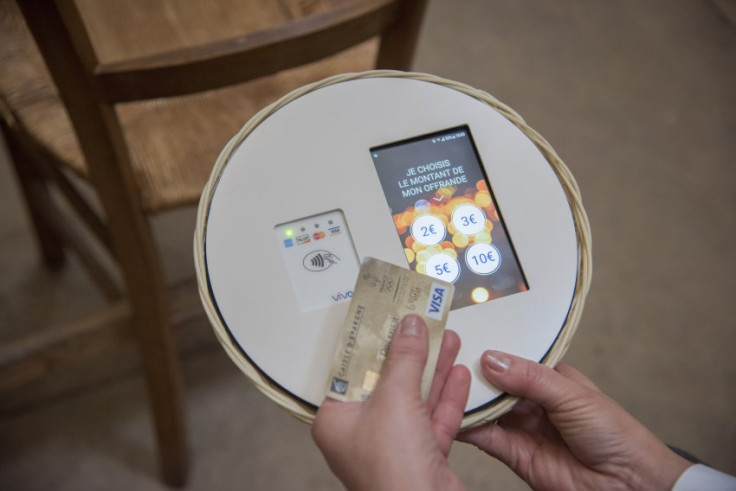Shrouds don't have eWallets: Paris church lets worshippers donate with contactless
The Catholic Church in Paris is the latest religious institution to modernise donations.

The faint flicker of church candles, the serene hum of distant prayer, the sharp beeps of contactless card donations. Wait, what? Yes, the Catholic church in Paris is going digital.
The city's diocese will introduce a system allowing contactless card payments during its next mass at Saint Francois de Molitor, a church located in an upscale and conservative Paris neighbourhood.
The diocese explained Thursday (18 January) that five connected collection baskets with a traditional design will be handed out to mass attenders during the service.
They will choose on a screen the amount they want to donate — from €2 to €10 per beep — and their payment will be processed in "one second".
The diocese insisted "this new gesture remains extremely close to the usual" one. Prishioners will still be able to use cash for their donations.
According to the diocese, donations amount to 79% of its resources. "Mass collection represents 14% of that contribution," it said. "That's about €98 on average, per year and per faithful."
It explained that the move is meant "to anticipate the gradual disappearance of cash money". This is not the French Catholic church's first attempt to keep up with new tech.
In 2016, a smartphone app for making donations called "La Quete," which translates as "The Collection", was introduced across 28 French dioceses and more than 2,000 parishes. About 4,000 donations have been made over 14 months in the eight Paris parishes that have been testing the app, with the average amount spent coming in at €4.71.
"The Church is committed to supporting everyone in the new ways of life and consumption," the Paris diocese said. "The dematerialisation of the means of payment is also part of the challenges the Church has to take up. Whether through a connected basket, with contactless payment, or through a smartphone app."
A press release added: "This offering for the life of the community symbolises mutual communion among the faithful of Christ. The money given is a spiritual offering."
Last October, the Catholic church in London introduced contactless payments as officials acknowledged the move towards a cashless society, devoid of coins and banknotes.
The Westminster Diocese said in a statement at the time: "Now, as we move into more of a cashless society, we want to make it easier for parishioners as well as visitors. The diocese is considering contactless collections as one of a number of possible options for the future."
Months earlier, in June 2017, the Church of England embraced similar technological changes, with dozens of its churches given handheld devices to take card donations from the faithful.
"We're aware that younger generations — and there are many people now who don't carry cash — want to give in different ways," said John Preston, stewardship officer at the institution.
"Enabling them to give in a way that suits them is something we'd like to try," he added.






















